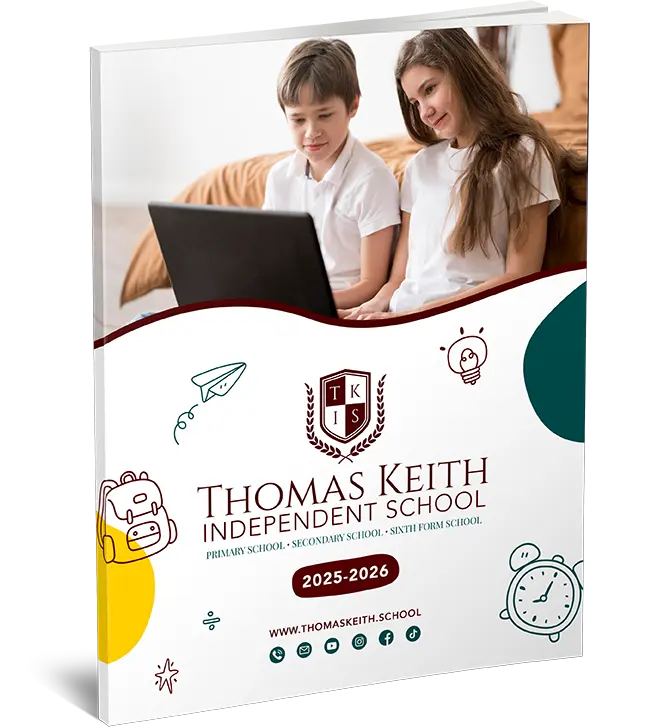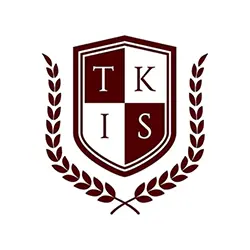Using Brackets In KS2 Literacy is an important skill that helps students enhance their writing by adding extra information or clarification without interrupting the flow of the main sentence. Brackets, also known as parentheses, allow students to provide additional details clearly and effectively. This article will explain how brackets are used, provide examples, and show how Thomas Keith Online Independent School incorporates this punctuation mark into its curriculum.
What Are Brackets?
Brackets are punctuation marks used to include extra information that is not essential to the main sentence but provides further explanation, an example, or clarification. The information inside brackets can:
- Explain something.
- Add an example.
- Clarify a point.
For example:
- Without brackets: The student finally arrived.
- With brackets: The student (who was late) finally arrived.
As shown, brackets allow us to add extra details without changing the meaning of the sentence.
Key Uses of Brackets In KS2 Literacy
Here are some key ways that Using Brackets In KS2 Literacy helps students make their writing more precise and informative:
1. Adding Extra Information
Brackets can be used to include additional details that enhance the sentence but aren’t necessary for its core meaning. This can help provide further context or elaboration.
- Example: She completed her homework (which took two hours) before dinner.
This sentence would still make sense without the part in brackets, but the additional information helps clarify how long the homework took.
2. Explaining Terms or Concepts
Brackets can also be used to explain a term or concept that may need further clarification for the reader. This is especially useful when students are writing about complex or unfamiliar subjects.
- Example: The rainforest is home to many species (e.g., jaguars, toucans, and sloths).
In this case, the use of brackets helps provide specific examples of species found in the rainforest, offering a clearer picture for the reader.
3. Including Dates or Numbers
Brackets are frequently used in writing to present numerical or date-related details that might be important but do not disrupt the flow of the sentence.
- Example: William Shakespeare (1564–1616) wrote many famous plays.
Here, the date range is important to the context but not necessary to the main point of the sentence. Brackets allow for this information to be included seamlessly.
4. Indicating a Change in Tone or Thought
Writers often use brackets to insert an aside or a change in tone. This can indicate a shift in thought or add a bit of humour or personal commentary.
- Example: The class (unsurprisingly) found the story amusing.
This use of brackets helps convey the writer’s take on the situation without changing the meaning of the sentence.

Teaching Brackets At Thomas Keith Online Independent School
At Thomas Keith Online Independent School, grammar lessons such as Using Brackets In KS2 Literacy are integrated into the curriculum through interactive activities. Students practice using brackets in a variety of contexts, reinforcing their understanding through hands-on exercises.
During lessons, students are encouraged to:
- Identify where brackets are needed in sentences.
- Rewrite sentences by adding extra information using brackets.
- Create examples of sentences with brackets.
For instance, in online classes, students might work on tasks such as:
- Correcting sentences with misplaced or missing brackets.
- Writing a paragraph and inserting relevant bracketed information.
These activities allow students to apply the rules for Using Brackets In KS2 Literacy in a practical, engaging way. The interactive nature of the lessons helps ensure that students not only understand the rules but are also confident in using them in their writing.
FAQs
1. When should brackets not be used?
Brackets should not be used to add essential information to a sentence. The information inside brackets must be supplementary or additional.
- Incorrect: The teacher explained the lesson.
- Correct: The teacher explained the lesson.
2. Can I use brackets in creative writing?
Yes, brackets are often used in creative writing to add extra details, humour, or asides that enhance the narrative without disrupting the flow.
3. Are brackets the same as commas?
No, commas can also be used to add extra information, but Using Brackets In KS2 Literacy makes it clear that the information inside the brackets is non-essential to the sentence. Brackets help distinguish this extra information more explicitly.
4. What’s the difference between brackets and dashes?
Brackets are typically used for subtle, non-essential details, while dashes are used for more dramatic pauses or to emphasise certain parts of the sentence. Dashes tend to draw more attention to the added information.
Conclusion
Using Brackets In KS2 Literacy is an important skill that helps students improve their writing by adding clarity and extra information without disrupting the flow of the sentence. Brackets allow students to make their writing more precise, informative, and engaging. Schools like Thomas Keith Online Independent School integrate these lessons into their curriculum, helping students master the correct usage of brackets through interactive activities and practical application. By mastering the use of brackets, students can enhance their writing and become more confident in their ability to express ideas clearly and effectively.
To further support your child’s learning in Using Brackets In KS2 Literacy, consider exploring online resources or platforms that offer engaging grammar lessons and activities. With consistent practice, students will be well-equipped to use this punctuation mark confidently in their writing.




